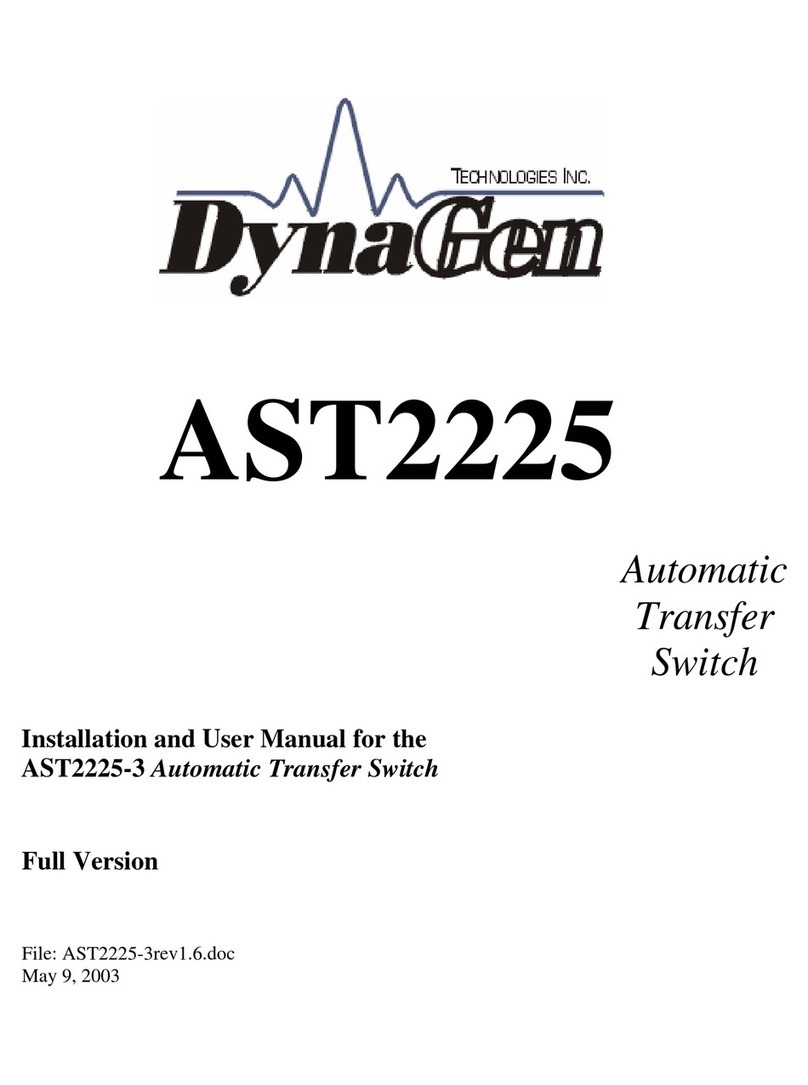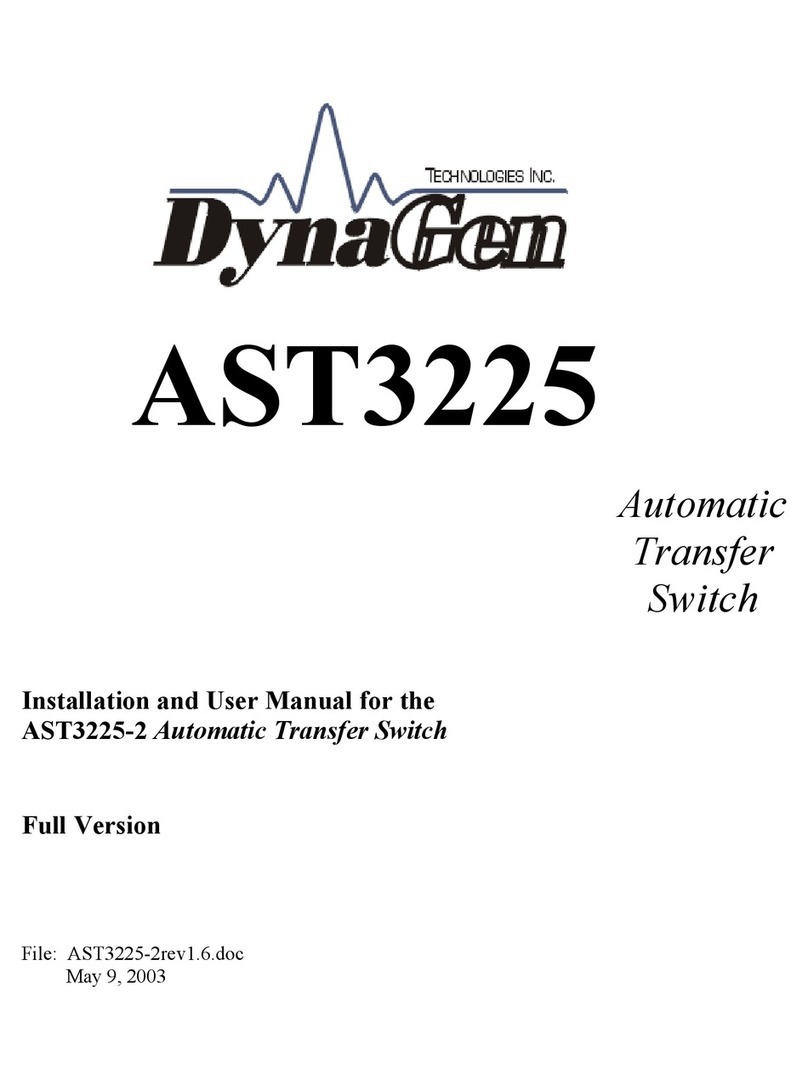
6
1:2 Relay Board Module:
The relay board provides means for automatic transfer of a utility source of power to an
emergency source of power, upon loss of the utility, and switches back again, upon
restoration of the utility. The relay board has no built in delays for transfer. Any required
delays must come from an external source (ie. engine controller, timer module).
1:2:1 Sensing:
The relay board module provides 2 types of voltage sensing:
i). Relay Coil Sensing:
When the slide switch, located on the relay module, next to the 8 pin octal socket, is in
the ON position (position away from the octal socket), utility voltage sensing is provided
by means of an on board relay coil. The relay coil characteristics set the pick up and drop
out of the main utility source.
ii). Adjustable Voltage Sensing:
When the slide switch, located on the relay module, next to the 8 pin octal socket, is in
the OFF position (position closest to the octal socket), the on board relay coil is bypassed,
and voltage sensing is provide by an optional UL approved voltage sensing module,
which plugs into the 8 pin octal socket. The adjustable voltage monitor is a single set-
point voltage monitor. Input voltages 10% below the set-point range will cause the output
contacts to de-energize causing a utility source failure. The adjustable voltage-sensing
module recommended for use with the OPT2600-2 Automatic Transfer Switch is the
Symcom 201-200-SP-T Rev5.20. The adjustable voltage-sensing module recommended
for use with the OPT2600-3 Automatic Transfer Switch is the Symcom 201A.
ADJUSTMENT PROCEDURE
Rotate the line voltage adjustment to the nominal line voltage feeding the transfer switch.
The nominal line voltage can be measured between phase A and phase C of the line side
inputs on the normal breaker. If the voltage is up to 10% below the adjustable voltage set
point, and the LED on the monitor is illuminated, the adjustable voltage monitor is
working properly. The voltage sensor can also be factory set to customer specifications.
Please note that there will be a 3 second delay between emergency to normal transfer.
This can be observed be a flashing LED on the monitor.
User Manual for the OPT2600 Series Automatic Transfer Switch





























